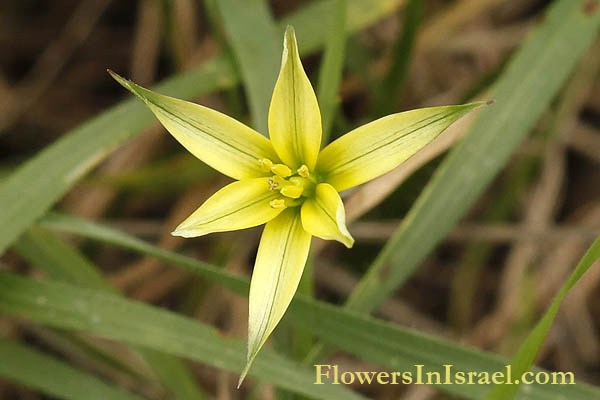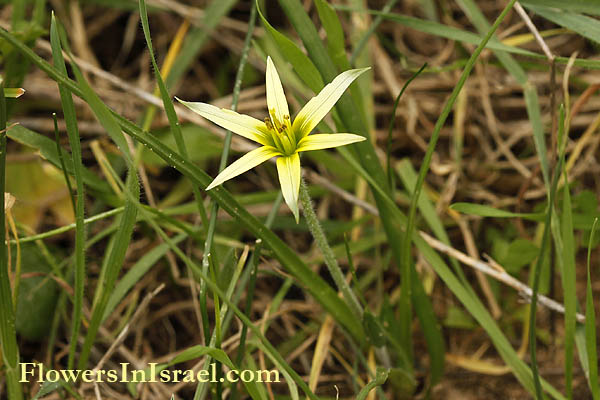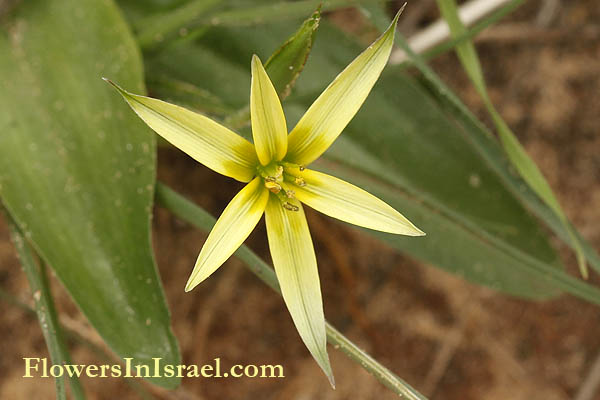Hebrew: זהבית שרונית
| Scientific name: | Gagea dayana Chodat & Beauverd | |
| Common name: | Stolonous Gold-crocus | |
| Hebrew name: | זהבית שרונית | |
| Family: | Liliaceae, שושניים |

|
| Life form: | Geophyte | |
| Stems: | 5-25 cm tall; additional normal roots, wide roots emerge from one side, and engulf the entire bulb | |
| Leaves: | Rosette, entire, linear, smooth | |
| Inflorescence: | Racemose, or a solitary flower | |
| Flowers: | Yellow, green stripe on reverse of petals and sepals | |
| Fruits / pods: | Capsule, ellipse | |
| Flowering Period: | January, February | |
| Habitat: | Sandy areas near coast and Negev Desert | |
| Distribution: | Mediterranean Woodlands and Shrublands, Semi-steppe shrublands, Shrub-steppes | |
| Chorotype: | Med - Irano-Turanian | |
| Summer shedding: | Ephemeral |

Derivation of the botanical name: Gagea, named for Sir Thomas Gage (1761 - 1820), Hengrave Hall, Suffolk, who botanized in Ireland and Portugal. dayana, for John Day (1824 - 1888), collector of orchids in India, Ceylon and Brazil.


|